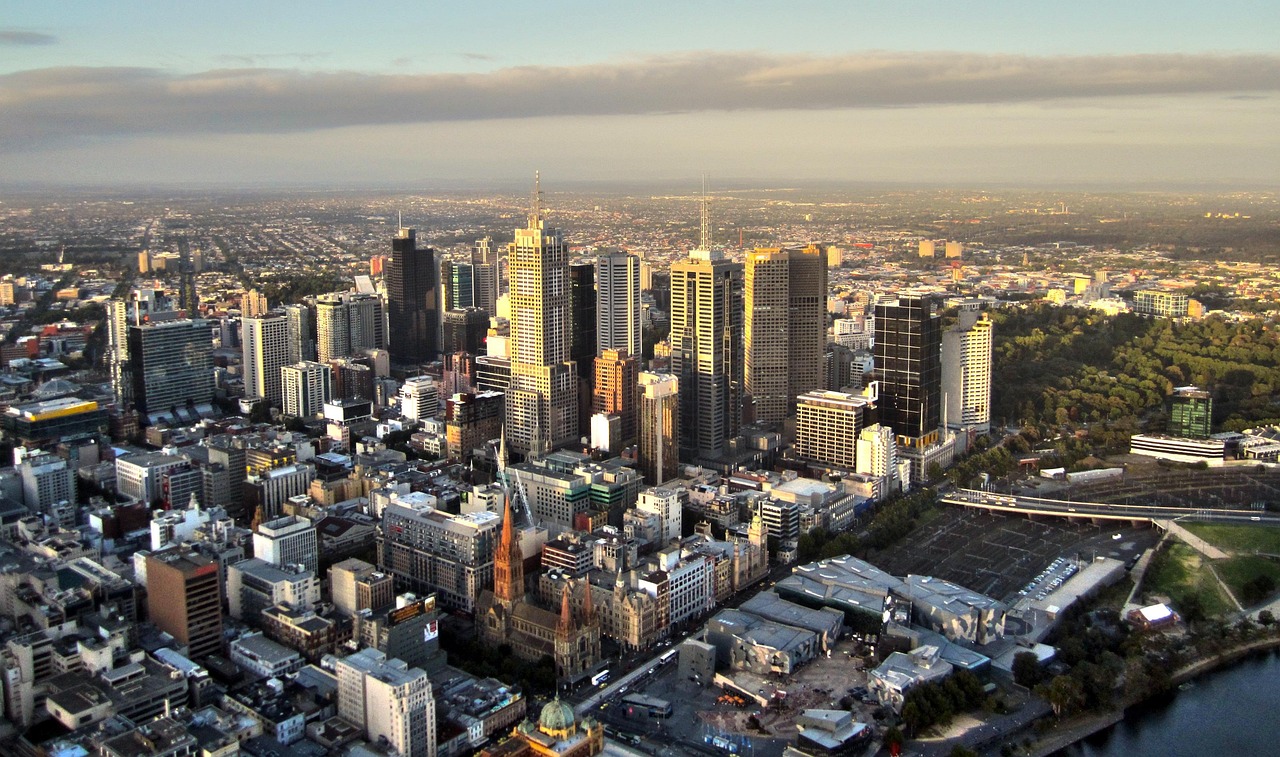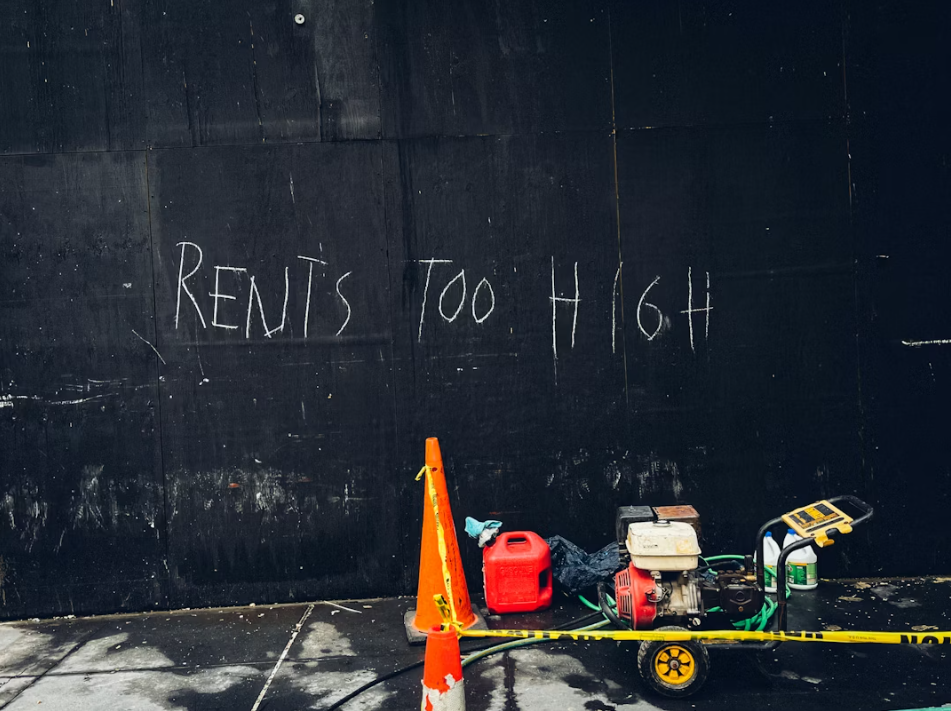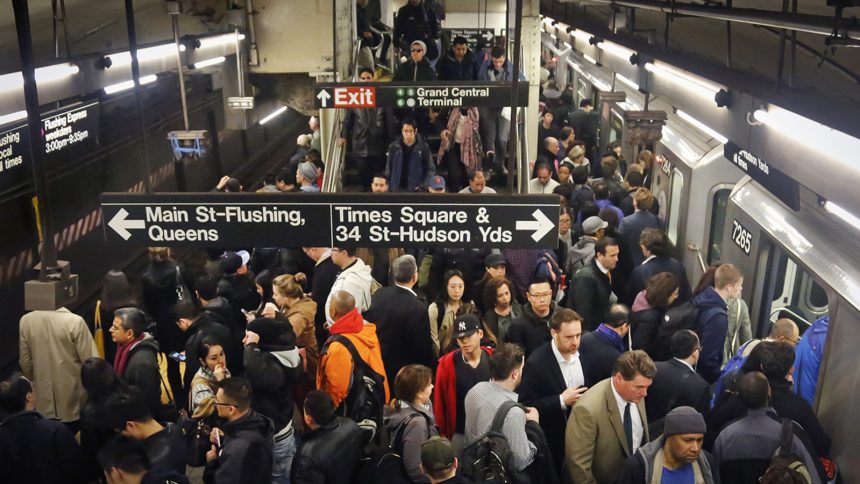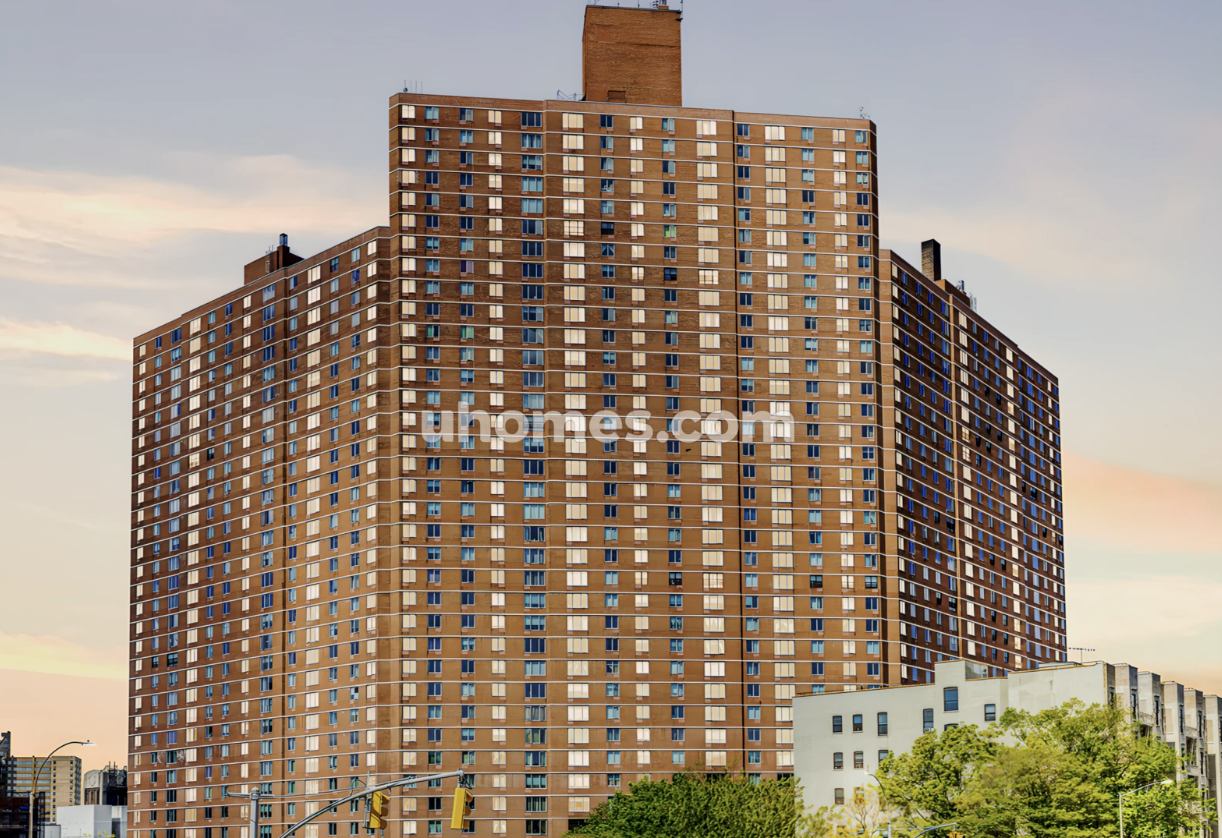There are many different types of public transportation in the United States. As the subway system in the metropolis of the United States, the New York subway lines are all over New York. It is also the busiest form of transportation in New York. Taking the subway is an easy and safe way to get around. One can get to their destination in New York City quickly. Subway is the central public transportation system in New York. It carries a lot of transportation tasks and is the only means of transportation for most New Yorkers to and from work. Today, we bring you a New York subway ride and purchase tickets/card strategy. The content mainly includes the New York subway map and operating hours, prices, student card, subway card expiration date, return card, and other issues the need for students can look at!
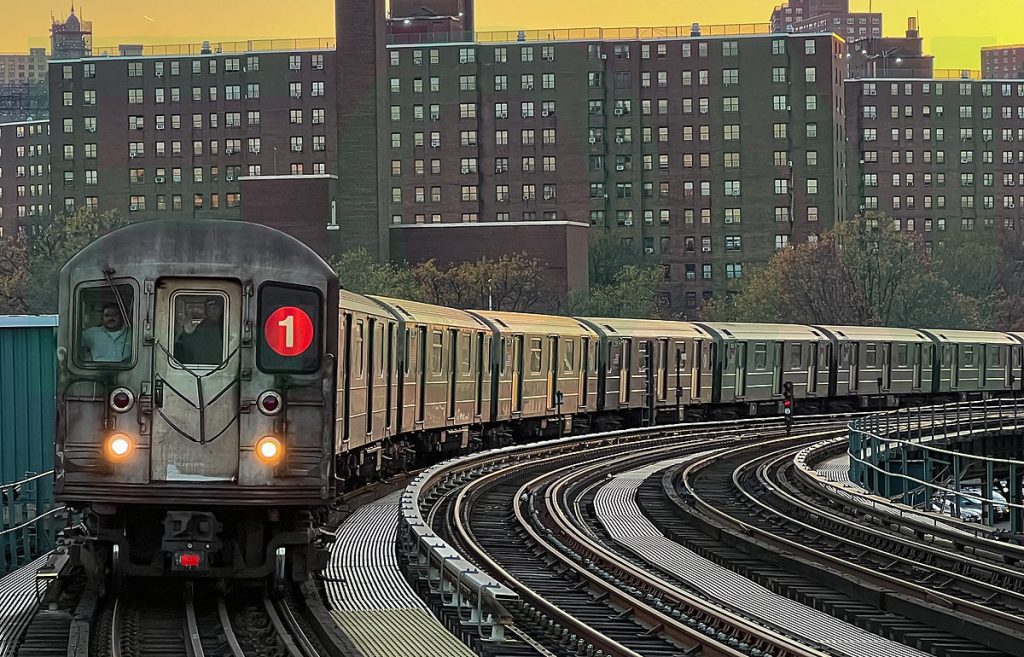
Subways in major U.S. cities
Subways in the United States include the New York Subway, Chicago Metro, Washington Metro, Boston Metro, San Francisco Bay Area Rapid Transit, Philadelphia Metro, Atlanta Rail Transit, Los Angeles Rail Transit, Miami Metro, San Juan Metro, and 15 other subway systems.
New York Subway Background
The New York Subway is an urban rail transit system in New York City, United States. Its network of lines covers the four boroughs of the Bronx, Brooklyn, Manhattan, and Queens. And is operated by the New York City Transit Authority (NYCTA), a division of the Metropolitan Transportation Authority (MTA).
The first underground line of the New York City Subway system opened on October 27, 1904. It is one of the world’s oldest rail transit systems, one of the largest in the world. In 1953, the New York City Transit Authority (NYCTA), a public agency under the authority of the City Council, was established and took over subway, bus, and streetcar service in New York City. NYCTA was merged into the Metropolitan Transportation Authority (MTA) in 1968.
Washington Subway Background
Washington Metro, the second busiest urban rail transit system in the United States. Second only to the New York Metro, it began operations in 1976. The service area includes Washington, D.C. and neighboring Maryland counties of Prince George’s and Montgomery, as well as Fairfax, Arlington, and Alexandria in Virginia.
The Washington Metro and buses are owned and operated by the Washington Metropolitan Area Transit Authority. Unlike the subway systems in New York City, Philadelphia, and Boston. The Washington Metro is based on distance and time traveled. Since its opening in 1976, the Washington Metro has grown to six lines with 91 stations and 188 kilometers of track.
Los Angeles Subway Background
Los Angeles County Metro Rail is operated by the Los Angeles County Metropolitan Transportation Authority (LA Metro), with service beginning in 1990. The system is an urban rail transit system in the Los Angeles County area of California. The system has six lines, four light rail systems and two underground railroads, serving 93 stations. It is also connected to the Los Angeles Metro Transitway (Orange and Silver lines) and the Metrolink commuter rail system.
About New York City Subway
The Main Subway Line
As the most crowded city in the United States, New York’s transportation system is complex and diverse. Driving is not the best choice in New York because traffic jams may always exist. And parking fees are higher than you imagine. At the same time, the subway has become the most essential mode of transportation because of its convenience. New York has the most developed subway system in the world. The New York subway has been in operation for more than 100 years and is the only subway system in the world that operates 24 hours a day.
It has 472 stations and 27 lines, serving Brooks (Bronx), Manhattan (Manhattan), Queens (Queens), Brooklyn (Brooklyn), and Staten Island (Staten Island), and has become the people’s travel choice. In the New York Subway map, the New York Subway has nearly 500 stations and 660 miles (1,060 kilometres) of track. However, their age makes New York subway stations sometimes small, stuffy and dirty.
The New York subway is mainly:
Red Line (1, 2, 3), Green Line (4, 5, 6), Blue Line (A, C, E), Yellow Line (N, Q, R, W), Orange Line (B, D, F, M), Brown Line (J, Z), Gray Line (L, S), Purple Line (7), and Green Line (G). The Path Line also connects Newport to the Isle of Man and the Air Train to JFK Airport.
New York Subway Frequency Classification
The New York subway runs 24 hours daily, but many categories exist.
First of all, there are Express and Local trains. Express trains stop at major stations, and slow trains stop at every station.
During the morning and evening rush hours, some subway trips become Express. If the numbered signs on the subway are round, they are regular trips. If they are square, they are Express. Express carriages are relatively newer.
Secondly, there are weekdays and weekends timeline. There are also daytime trips, evening trips, late-night trips, and all times trips.
New York Subway Entrance and Exit
The entrance to the New York subway is usually on the corner of a street, and the stairs lead directly to the subway station. Please note that there is a light on the side of the subway entrances, which comes in green and red. The green light means that it is both an exit and an entrance and is open 24 hours a day. The red light means it is only an exit and will be closed after the evening rush hour. So if you take the subway at night, you should only enter the subway station marked with a green-lighted ball.
New York Subway Map
Subway station map entrances in New York tend to have subway transit maps for the entire city. Each subway line is marked with a different color. It may seem confusing when you first look at it. You can combine it with Google Maps, find the line you want to ride on. And then look up the station by color and you’ll be able to see what’s going on.
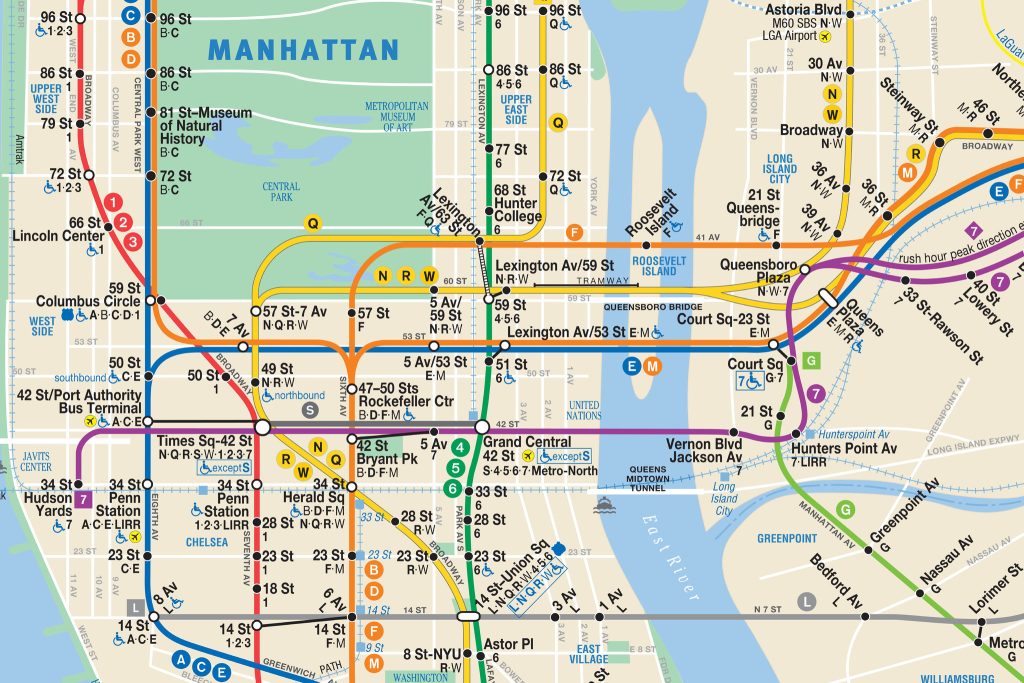
Buy New York Subway Tickets
There are two types of ticket machines in New York Subway stations. One can only swipe cards and the other can swipe cards as well as pay cash. You can choose to pay by credit card or cash. Both bills and coins are allowed. The current subway ticket machines have a multi-language system, which is convenient for international students.
About New York Subway Metro Card
The New York City Subway transit system uses a one-fare system. Regular fares are $1.75 for both subway and bus rides. Riders usually pay with a MetroCard. You can also use coins on buses, not bills. On the subway, you must purchase a MetroCard or TAP card to pay your fare. To ride Metro Rail, you must pay with a TAP card.
1. Where I can Buy Metro Card
New York Subway stations and many other rail stations sell a variety of MetroCards at ticket vending machines. Travelers can also buy MetroCards at the ticket counters in subway stations or at the stores that are usually located next to each subway stop.
2. Metro Card Price and Types
The MetroCard has two types of fares. Regular Fare and Unlimited Rides. It can be used not only on the subway but also on public transportation. The MetroCard can also be used for the Airport Express Air Train, where the amount is deducted from the card each time you ride.
Regular Fare: The card can be reloaded repeatedly and is charged according to the number of times the card is swiped. 2.75 USD is deducted from the card each time the card is swiped on the subway.
Unlimited Ride: Unlimited rides on subways and buses for a fixed period. This method has two types: unlimited rides for seven days and unlimited rides for 30 days.
If you take very few rides (no more than 4), buying a single-use one-way ticket is recommended. They cost $3 each and are only sold at vending machines. Add value with either Pay-Per-Ride or Unlimited Ride, billed per ride and day of travel. Regular fare is $1.75. Fares can be paid with cash (exact change) or a TAP card. To ride Metro Rail, you must pay with a TAP card. If you ride a lot (more than 30 times a month), you can buy weekly and monthly passes, i.e., unlimited seven days and unlimited 30 days.
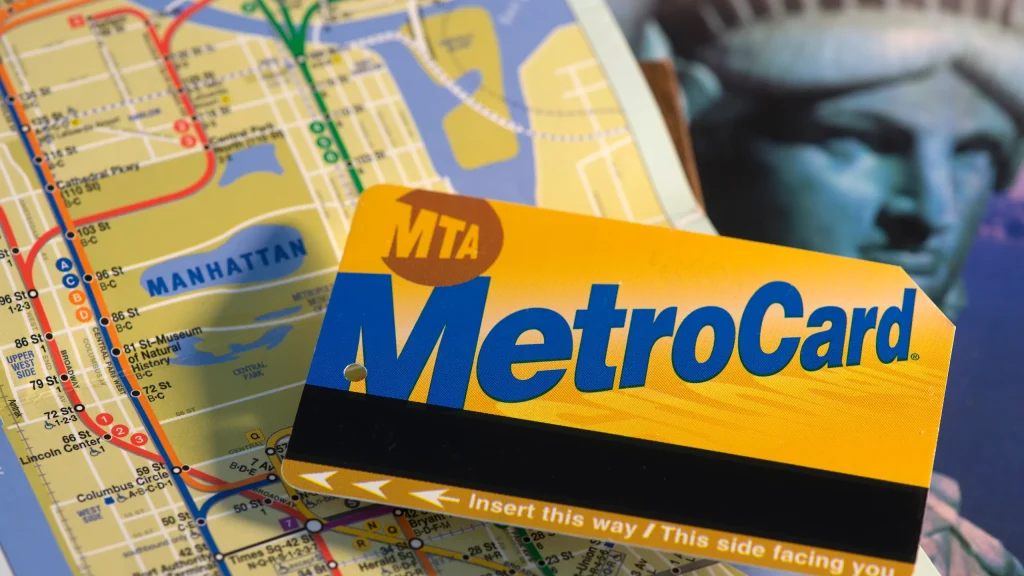
3. Metro Card Type Fares
| Types | Price($dollars) |
|---|---|
| One Way Ticket | $1.75 |
| One Day Pass | $7 |
| 7-Day Pass | $25 |
| 30-Day Pass | $100 |
| Seniors/The Disabled | $0.75/0.35 |
| K-12 Students | $1 |
4. Students Metro Card
The school distributes the cards. Three free rides between 5:30 a.m. and 8:30 p.m. each school day. This includes free transfers between Metro and Local, Limited and Select bus services. It’s valid for one semester, and you’ll get a new one each semester. For students who need to make multiple one-way transfers to school, there is a four-trip student MetroCard, which you can apply for at your school. The student MetroCard is for your use only.
About OMNY System
One Metro New York is a contactless fare payment system. It is for the transportation network in New York City and surrounding areas. OMNY works at all subway stations and on all buses, allowing you to travel throughout New York. You can use OMNY with your own contactless card or smart device. And now you can enter a station just by being near a card reader.
OMNY currently supports full-fare, pay-per-ride options, including free shuttle service. Users must sign up for an OMNY account. Enter their card information into their mobile wallet, and pay with electronic payment methods. It includes Apple Pay, Google Pay, and Apply Watch on their phone or by swiping their physical bank card.
Cash is always an excellent option for New Yorkers who need a bank card or smartphone. The benefits of the OMNY system, are that it will reduce crowds at ticket machines. It will speed up service, save millions of dollars to maintain the Metro Card system, and reduce fare evasion.
FAQ
The New York City Subway system consists of 27 different lines, each designated by a letter or a number. These lines serve the five boroughs of New York City, providing extensive transportation throughout the metropolitan area.
The new lines include the IRT Lexington Avenue Line, IRT Pelham Line, and IRT Jerome Avenue Line.
A standard MetroCard fare for unlimited rides for 7 days costs $33, while a single ride fare is $2.75.
OMNY is a contactless payment system allowing subway and bus fares to be paid via credit cards or smartphones. MetroCard, on the other hand, requires physical swiping and is gradually being replaced by OMNY.
No, MetroCards are not shareable as they are intended for individual use. Each MetroCard is programmed for a specific duration of use (e.g., 7 days) for one person and cannot be transferred or shared with others
Uncovering Top 10 Student Housing in New York
New York is famously known as the "city that never sleeps". It…
Visionary Guide to Top 10 Must-See New York Attractions
Those who are going to New York for the first time will…
Metro Mobility Manual: Mastering New York Transportation
New York's public transportation system is extremely well developed. Even if you…
